Good Reasons Why Garlic Can’t Be Ignored!
And I’m not talking about how it’s a breath-killer (which is true, that part can’t be ignored).

But actually, I’m referring to the abundant scientific studies that have demonstrated the anti-inflammatory and anti-microbial benefits of garlic, and loads of current research is showing that garlic helps in the prevention and management of certain types of cancer. Additionally, garlic's health benefits have been shown to promote better gut health, help you to live longer, resist osteoporosis, and improve cardiovascular health.
If that isn’t thrilling enough, there’s even more to garlic. There are several varieties and flavor profiles from which to choose. Food researcher and cookbook author (COOKING WITH FOODSCRAPS), Lindsay-Jean Hard, elaborates:
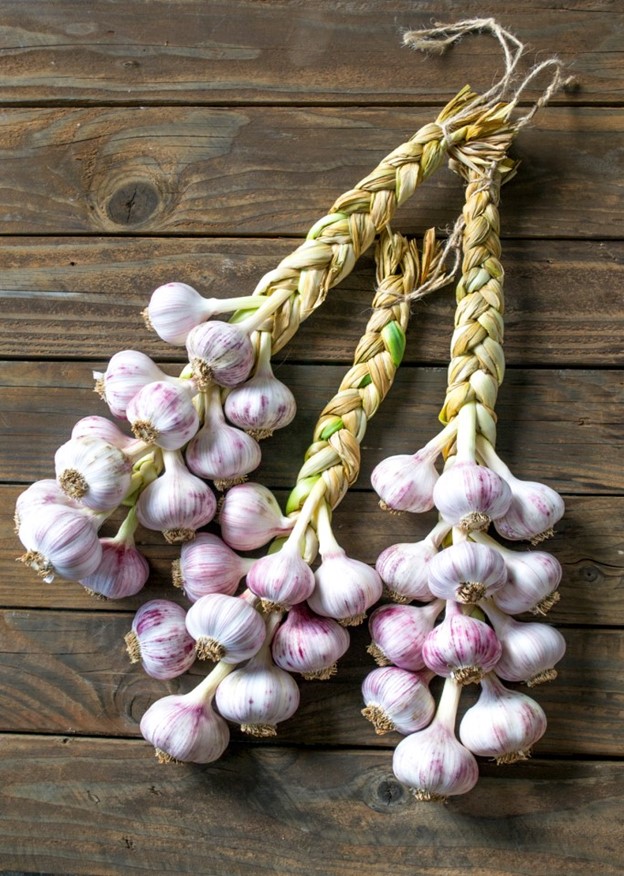
“There are many, many varieties of garlic (all are classified as either hard-neck or soft-neck garlic). Soft-neck garlic truly has a soft neck, meaning the central stalk is pliable enough to be manipulated -- this is the type used to make garlic braids. Soft-neck garlic tends to be milder in flavor and to have more cloves per bulb (up to 20!); hard-neck garlic, on the other hand, has fewer cloves but they're larger and easier to peel.”
For those who think “garlic is garlic,” that’s not true. As mentioned above, different varieties carry unique flavor profiles, but also as mentioned above, it’s only the soft-neck you see in grocery stores.
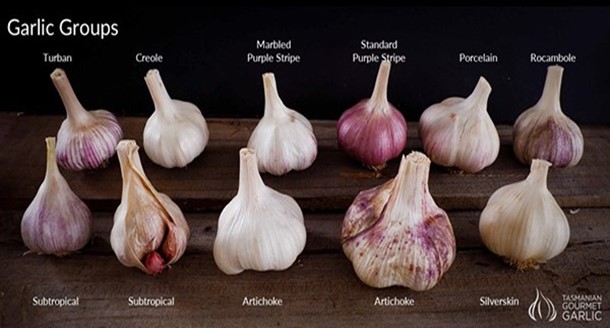
So I challenge you to find a farmers market so you can discover a world beyond soft-neck garlic. It’s typically only at a farmers’ market where you’ll likely find varieties such as Inchelium Red, Kettle River Giant, Purple Glazer, and Sicilian Silver. You’ll also see more color variation, like purple streaks in both the bulb wrappers and the cloves.
And if you get to know your local garlic farmer, you’ll have an easier time getting your hands on garlic at other stages of growth. For instance, there’s early season treats like green garlic and garlic scapes (the latter of which are only produced by hard-neck garlic) and wet or fresh garlic (which is fully mature garlic that is eaten immediately after it has been harvested, without going through the curing process). Try either of these garlic versions and I bet you’ll be hooked!
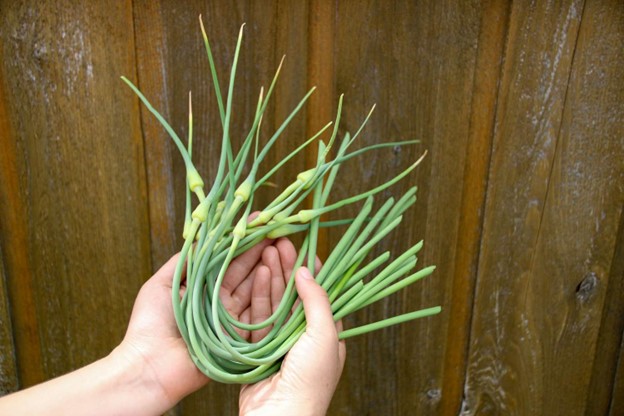
When shopping for garlic, look for hard, dry bulbs. Just like onions, they've been cured, which means they will last longer and store well. After curing, the roots and stalk are trimmed and the outmost layer of paper wrappers is removed. Then, the garlic is ready to hang out in a cool, dry place in your home for months. Both types of garlic store well once cured, but soft-neck garlic will keep much longer, which is why you'll usually find the soft-neck variety in your grocery store.
Lindsay points out that, “Garlic cloves can be as aggravating as shallots; recipes will call for a set number of cloves, but when heads of garlic can have such a wide range of clove sizes, there’s room for interpretation. You can assume a mediumish-sized clove of garlic is about one teaspoon when minced.
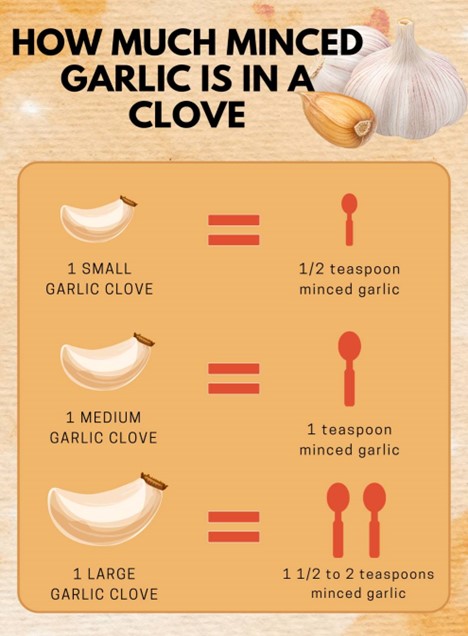
“And you’ll notice that if stored long enough, you'll eventually see little green sprouts in your garlic cloves. You don't need to remove these, but if that’s your preference, just flick them out with the tip of a sharp knife.”
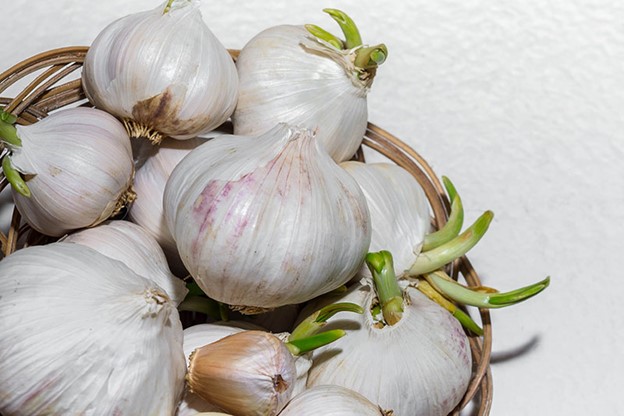
Finally, you’ve probably noticed how it’s hard to find a savory recipe that doesn’t call for garlic. But if garlic isn't the first thing you reach for when cooking, consider pairing it with your favorite protein, or add it to your favorite vegetable, or roast it (which brings out its softer side) and always add it to soups.
In closing, here’s a recipe that takes new potatoes to a whole new level, thanks to the combination of garlic and lemon (found years ago on www.tasteofhome.com).

1 pound small red new potatoes
2 tablespoons extra virgin olive oil
2 cloves garlic minced
1/3 cup shredded Parmesan cheese
2 tablespoons fresh lemon juice
1/4 teaspoon salt
1/4 teaspoon pepper
Directions:
Add Recipe to Cook'n

But actually, I’m referring to the abundant scientific studies that have demonstrated the anti-inflammatory and anti-microbial benefits of garlic, and loads of current research is showing that garlic helps in the prevention and management of certain types of cancer. Additionally, garlic's health benefits have been shown to promote better gut health, help you to live longer, resist osteoporosis, and improve cardiovascular health.
If that isn’t thrilling enough, there’s even more to garlic. There are several varieties and flavor profiles from which to choose. Food researcher and cookbook author (COOKING WITH FOODSCRAPS), Lindsay-Jean Hard, elaborates:

“There are many, many varieties of garlic (all are classified as either hard-neck or soft-neck garlic). Soft-neck garlic truly has a soft neck, meaning the central stalk is pliable enough to be manipulated -- this is the type used to make garlic braids. Soft-neck garlic tends to be milder in flavor and to have more cloves per bulb (up to 20!); hard-neck garlic, on the other hand, has fewer cloves but they're larger and easier to peel.”
For those who think “garlic is garlic,” that’s not true. As mentioned above, different varieties carry unique flavor profiles, but also as mentioned above, it’s only the soft-neck you see in grocery stores.

So I challenge you to find a farmers market so you can discover a world beyond soft-neck garlic. It’s typically only at a farmers’ market where you’ll likely find varieties such as Inchelium Red, Kettle River Giant, Purple Glazer, and Sicilian Silver. You’ll also see more color variation, like purple streaks in both the bulb wrappers and the cloves.
And if you get to know your local garlic farmer, you’ll have an easier time getting your hands on garlic at other stages of growth. For instance, there’s early season treats like green garlic and garlic scapes (the latter of which are only produced by hard-neck garlic) and wet or fresh garlic (which is fully mature garlic that is eaten immediately after it has been harvested, without going through the curing process). Try either of these garlic versions and I bet you’ll be hooked!

When shopping for garlic, look for hard, dry bulbs. Just like onions, they've been cured, which means they will last longer and store well. After curing, the roots and stalk are trimmed and the outmost layer of paper wrappers is removed. Then, the garlic is ready to hang out in a cool, dry place in your home for months. Both types of garlic store well once cured, but soft-neck garlic will keep much longer, which is why you'll usually find the soft-neck variety in your grocery store.
Lindsay points out that, “Garlic cloves can be as aggravating as shallots; recipes will call for a set number of cloves, but when heads of garlic can have such a wide range of clove sizes, there’s room for interpretation. You can assume a mediumish-sized clove of garlic is about one teaspoon when minced.

“And you’ll notice that if stored long enough, you'll eventually see little green sprouts in your garlic cloves. You don't need to remove these, but if that’s your preference, just flick them out with the tip of a sharp knife.”

Finally, you’ve probably noticed how it’s hard to find a savory recipe that doesn’t call for garlic. But if garlic isn't the first thing you reach for when cooking, consider pairing it with your favorite protein, or add it to your favorite vegetable, or roast it (which brings out its softer side) and always add it to soups.
In closing, here’s a recipe that takes new potatoes to a whole new level, thanks to the combination of garlic and lemon (found years ago on www.tasteofhome.com).

Garlic and Lemon New Potatoes
Ingredients:
1 pound small red new potatoes
2 tablespoons extra virgin olive oil
2 cloves garlic minced
1/3 cup shredded Parmesan cheese
2 tablespoons fresh lemon juice
1/4 teaspoon salt
1/4 teaspoon pepper
Directions:
1. Cut scrubbed potatoes into wedges; place in a large saucepan.
2. Add water to cover; bring to a boil.
3. Cook, covered, until tender, 10-15 minutes; drain.
4. In the same pan, heat oil over medium-high heat.
5. Add potatoes; cook until browned, 4-6 minutes.
6. Add garlic; cook 1 minute longer. Remove from heat.
7. Stir in remaining ingredients.
2. Add water to cover; bring to a boil.
3. Cook, covered, until tender, 10-15 minutes; drain.
4. In the same pan, heat oil over medium-high heat.
5. Add potatoes; cook until browned, 4-6 minutes.
6. Add garlic; cook 1 minute longer. Remove from heat.
7. Stir in remaining ingredients.
Recipe formatted with the Cook'n Recipe Software from DVO Enterprises.
 Alice Osborne
Alice Osborne
Weekly Newsletter Contributor since 2006
Email the author! alice@dvo.com
